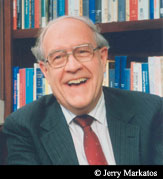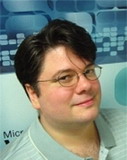A few weeks ago, Sterling Publishing sent me a copy of Cliff Pickover‘s new book The Math Book. I enjoyed reading the book (see my review) and set up the interview that follows.
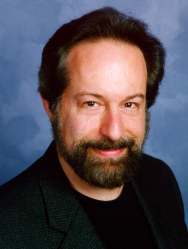
JC: The Math Book is your first book that I’ve read. Is it typical of your writing? How would you summarize the topics you’ve written about?
CP: My past 40 books cover many different topics. A number of these books concern the beauty of mathematics. Others cover topics at the borderlands of science, roaming far and wide on topics ranging from creativity, art, mathematics, and human intelligence, to higher dimensions, religion, strange realities, time travel, alien life, and science fiction. You can see a listing of my other books here. This should give your readers a flavor for the kinds of topics on which I enjoy writing.
Of course, The Math Book is serious mathematics, but I hope I’ve introduced an element of art and playfulness as well — the topics flow from fractals, to Rubik’s cube robots, to the infinite monkey theorem! For me, mathematics cultivates a perpetual state of wonder about the nature of mind, the limits of thoughts, and our place in this vast cosmos.
With respect to my other books, some of which may be more at the fringes of science, I’d point out that “fringe” research is crucial — not just for its educational value but because significant discoveries can come from such study. At first glance, some topics in science or sociology in my other works may appear to be curiosities, with little practical application or purpose. However, I have found these experiments useful and educational, as have the many students, educators, artists, and scientists who have written to me. In fact, science is filled with hundreds of great discoveries that have emerged through chance happenings and serendipity, for example: Velcro, Teflon, X-rays, penicillin, nylon, safety glass, sugar substitutes, dynamite, and polyethylene plastics.
Several of my past books explore a variety of topics to test your curiosity and powers of lateral thinking. Robert Pirsig wrote in Zen and the Art of Motorcycle Maintenance, “It’s the sides of the mountain which sustain life, not the top. Here’s where things grow.” This also applies to the joy that writers experience when letting their minds drift and when wondering about humanity’s place in the universe.

Beltrami’s pseudosphere by Paul Nylander, included in The Math Book
JC: You’ve written a lot of books, especially for someone who has a full-time job in addition to writing. How do you manage your time?
CP: When people ask me how I manage my time, I reply: “Some people play golf on the weekends. Instead, I prefer to write.” Of course, my prolific writing pales in comparison to American novelist, lawyer, and workaholic Erle Stanley Gardner (1889-1970), who once worked on seven novels simultaneously and dictated 66,000 words a week! Gardner would never start to dictate until he had worked out the entire plot of his novel. He actually hired six secretaries to handle his dictation, which he found more efficient than typing. His best-known works focus on the lawyer-detective Perry Mason.
I don’t know how writers like Isaac Asimov were so prolific before the age of the computer. I would have a very difficult time writing books, and doing all the necessary text rearrangements and editing, without a word processor. According to the New York Public Library Desk Reference (4th ed.), Isaac Asimov wrote over 400 books and is the only author with a book included in every major Dewey-decimal category. I sit in awe of Asimov, but a few people have exceeded his book output. Lauran Paine (b. 1916) has published over 900 books under more than 90 pen names. Paine spent his youth working as a cowboy, and today at least 500 of his books are Westerns.
JC: How do you write? Do you have a set schedule and place for writing? Anything unusual about your environment or equipment?
CP: French writer Marcel Proust composed his books in a haphazard fashion. He did not start at the beginning and finish at the end. He did not write linearly. Instead, ideas came to him in flashes as he went about his daily routine. Most of my own books are composed in the same way. As ideas come to me during the day or in the realm between sleep and wakefulness, I jot them down and continue to fill in details in the book. For me, writing is exactly like painting, adding a spot of color here, a detail there, a twig on this tree, a bit of foam on that ocean wav … No painter starts at the top of the painting and finishes at the bottom.
My approach to filling in detail, like a painter dabbing paint, is fine in the age of word processors, but it was amazing that Proust used the same approach so well. He would dictate to his stenographers who would type an initial manuscript. Then, he would crowd the margins with additional details and establish links between scenes and characters. He would paste in new pages and have the new work typed again and again. Edmund White notes in his biography of Proust, “If any writer would have benefited from a word processor, it would have been Proust, whose entire method consisted of adding details here and there and of working on all parts of his book at once.” As for my books, there’s nothing special about the tools I use and nothing special about my environment. These days, I use Microsoft Word.
JC: Are you writing a book now?
CP: I am finishing a book in the style of The Math Book — one page of text facing one page of illustration. Entries are in chronological order. Let’s wait to see how well The Math Book sells. If it sells a sufficient number of copies, perhaps I can convince a publisher to consider this newer work that covers a particular array of topics in science, art, history, and popular culture.
JC: Would you be interested in writing a computer science analog of The Math Book?
CP: I very much enjoyed creating The Math Book with my publisher, Sterling, and the $19 price offered by Amazon.com is amazing for a 528-page all color hardcover. I would welcome doing another book of this kind if we feel that such a book has not been done before and that it is marketable.
JC: Who are some of your favorite authors, either for content or style?
CP: My favorite tales of parallel worlds are those of Robert Heinlein. For example, in his science-fiction novel The Number of the Beast there is a parallel world that appears identical to ours in every respect except that the letter “J” does not appear in the English language. Luckily, the protagonists in the book have built a device that lets them perform controlled explorations of parallel worlds from the safety of their high-tech car. This is my favorite novel, and the only one that I’ve read over five times — although I could never finish it the first few times. It’s a novel that many readers dislike, can’t finish, or understand. The final section is nearly incomprehensible. But for me, it provides a sense of mystic transport as the brainy characters enter parallel worlds, fleeing from danger.
JC: There is a scene in the movie Good Will Hunting where Robin Williams’ character, Sean, asks Matt Damon’s character, Will, what he likes to read. Will’s response is “Hey, whatever blows your hair back.” What blows your hair back? Any books, blogs, podcasts, etc. that you turn to for inspiration?
CP: These days, I’m enjoying CDs and DVDs from The Teaching Company – on subjects ranging from the history of mathematics, to the history of the world, to an introduction to Judaism. Some of their classes on the history of mathematics are awesome mind-bogglers.
My most popular blog, Reality Carnival, highlights the kinds of topics and stories that interest me.
JC: Your writing indicates you have broad interests. Have you struggled to find where you want to be along the continuum between Renaissance man and specialist?
CP: I prefer to be a generalist. In fact, if I had to manage a foundation that gives money to scientists, I would also consider high-quality “generalists” as recipients. Experts have become very specialized, and science popularizes are often frowned upon by their more “serious” colleagues. Sometimes, specialists develop blind spots after years of intense focus on a single topic. Thus, I would devote a portion of my money to training “generalists” who traverse several fields and then bring together ideas in ways that specialists may be unable to do. They will also look for overlaps between different domains of research and try to solve shared problems with a single approach. As our rate of technological progress skyrockets in the 21st century, these Facilitators will study the multidisciplinary implications of this acceleration and work on technologies or new ways of seeing that help humanity assimilate advances that outstrip our comprehension and the restrictions of our intuition.
Other interview posts

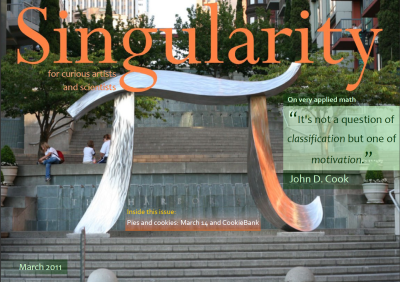
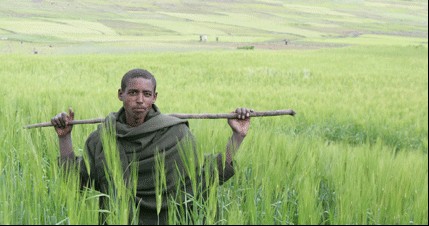
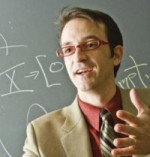 A few weeks ago I discovered
A few weeks ago I discovered 